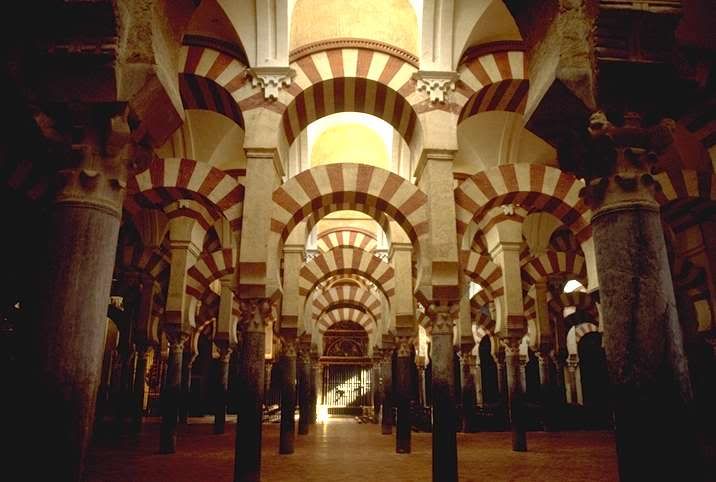 |
Photo by E.Andersen
(Note: I have updated my post on Rothko to make a better argument for the (false) transcendentalism in his art.)
Over the last couple of days, I have tried to show how modern artists build a parallel universe for us to take us down their transcendental paths. I started off with the experimental films of Bruce Elder, then I described the methods of the well-known painter Mark Rothko.
For a little while, I was intrigued by the design and architecture of Islam. I was interested mostly because I felt that many of their innovative works were actually copies of European, Byzantine or Roman endeavors. As I studied this a little more, I was struck by the "tricks" they used to lure their believers (and even non-believers) into their fold. They do this in almost the same methods that I have described Elder and Rothko using, namely: a disorienting of our senses to have them open and receptive to this "other world."
I sent some of these thoughts to View From the Right a while ago.
After spending some time with Elder's and Rothko's works, I am struck by the similarities of methods that Islamic art uses.
* Like Rothko’s huge canvases, they use unexpected proportions and sizes.
* As in Elder's editing methods, Islamic designs are a chaotic juxtaposition of patterns and shapes.
* There is an incessant repetition of forms (the arches in the Great Mosque of Cordoba - now a cathedral, for example) as though to induce trance-like conditions. Similarly with the muezzin’s repetitive chants (wails). Elder’s film uses repetition of imagery throughout.
 |
* There is very little empty space in the wall tile patterns. The huge courtyards in the mosques fill up to the maximum with bodies, so they are always densely packed when in full function. Even the arches and pillars in the Cordoba (former) mosque show this relentless avoidance of empty space.
Rothko’s canvases appear empty but are writhing with life under the monochromes, which cover the whole canvas.
Elder's fast-paced editing allows for very little "down" time, forcing on us an incessant cacophony of disorienting images.
In my assessment of Islamic art, I said that these methods were an attempt to find god and the transcendent, which seem ever-elusive. But an astute commentator at VFR said:
I suspect, contra Miss Asrat, that they [the tiling patterns] represent less an attempt to "barge in on Allah" than a psychological device for triggering an inescapable sense of "Allah barging in" on the observer, particularly for an infidel.I think, after these few days of figuring out these mesmerizing artworks, it is a mixture of both. It is a fervent attempt by these artists (and Muslims) to find a god through these "occult" means. But this god remains elusive and the artists (and Muslims) never cease in searching, and wailing, for him. And secondly, as the VFR commentator says and I have written these past couple of days, there is some force that is twisting our perceptions (via the artists and designers) to lure us into his unholy kingdom.
In any case, the force and power of art cannot be undermined where the transcendent is concerned.
